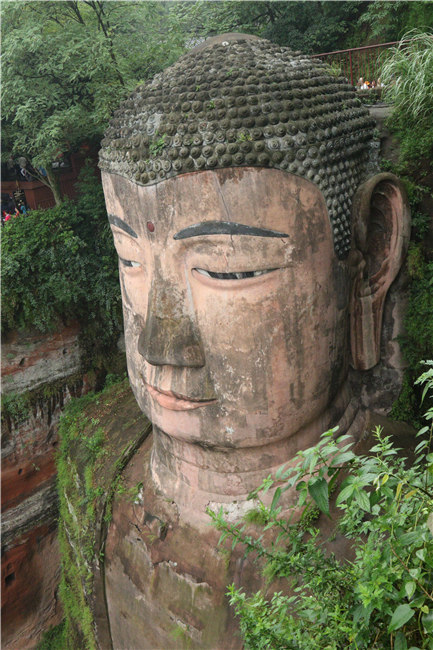Mount Emei: spectacular mountain scenery and Buddhist heaven
 0 Comment(s)
0 Comment(s) Print
Print E-mail People's Daily, October 9, 2016
E-mail People's Daily, October 9, 2016
|
|
|
Silver frost highlight the marvelous snow-capped mountains, and gilded Buddhist architectures in southwest China.[Photo provided to People.cn] |
The incense gave me my first real taste of the mountain's Buddhist characteristics, though only because I missed the 55 temples scattered across the slopes on my way up. Baoguo Temple, Fuhu Temple, Wannian Temple, Huazang Temple, Xianfeng Temple – all are over 1,000 years old, and they helped to attract 3 million visitors to the mountain in 2015 alone, according to my tour guide. The mountain gained its first Buddhist temple some 1,800 years ago when the religion arrived from India; Mount Emei evolved into the center of Buddhism in China around the 6th century AD. It is the true cradle of Buddhism in China, and is one of China's Four Sacred Buddhist Mountains.
I couldn't have missed the mountain's weightiest Buddhist presence, the 48-meter-high statue of Samantabhadra Bodhisattva, or Pu Xian Bodhisattva. The soaring object was right above my head, facing me. From a short distance, the colossal gilded statue is absolutely spectacular. Walking up to its base, there is a shrine within the statue where tourists can work toward attaining enlightenment.
Wearing a gold Buddhist crown and holding a Ruyi Rod in its hand, the Bodhisattva sits on a lotus platform placed on an elephant's back. The elephant has a long nose and strong legs, with eyes looking ahead as if it is about to bring the Bodhisattva down the mountain to preach. Many visitors took pictures, some commemorating the fulfillment of a long-cherished wish to visit the sacred site. Others were simply marking the end of the arduous hike to the summit.
Next to the statue is another, much lower shrine, but with a brighter golden color so radiant that it dazzled even in the dreary overcast weather. It is the Golden Summit, the highest shrine of Huazang Temple, honoring the Manjusri Buddha. Huazang Temple is said to have been built during the Donghan Dynasty (25-220 AD), but it has since been rebuilt multiple times because of fires. The latest renovation began in 1986, when the government shelled out 3.5 million RMB to reinforce and update it. That renovation gave the shrine its eye-catching, shiny exterior. The work lasted until 2005. When the temple reopened to public in the same year, 108 eminent monks from China and abroad rallied to witness the grand event.
The Mount Emei scenic zone is actively cultivating tourism. From Oct. 11 to 13, the site is inviting visitors to view its bamboo forests. From Oct. 15 to 17, it will hold friendly mountain-climbing competitions for foreigners and locals. About 40 kilometers away is the 1,300-year-old Leshan Giant Buddha, the largest stone Buddha in the world. Approximately 130 kilometers away is Chengdu Panda Base, where visitors can witness the endangered species at play. And to fuel all that sightseeing, tourists can indulge in the local Sichuan cuisine, which always lives up to its spicy reputation. The area never lacks wonders.
|
|
|
The 1,300-year-old Leshan Giant Buddha, the largest stone Buddha in the world. |







